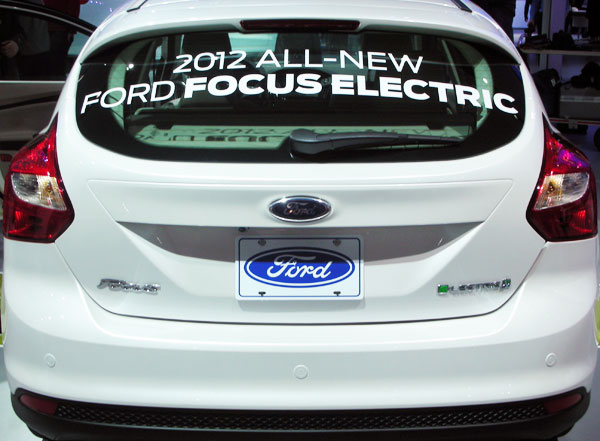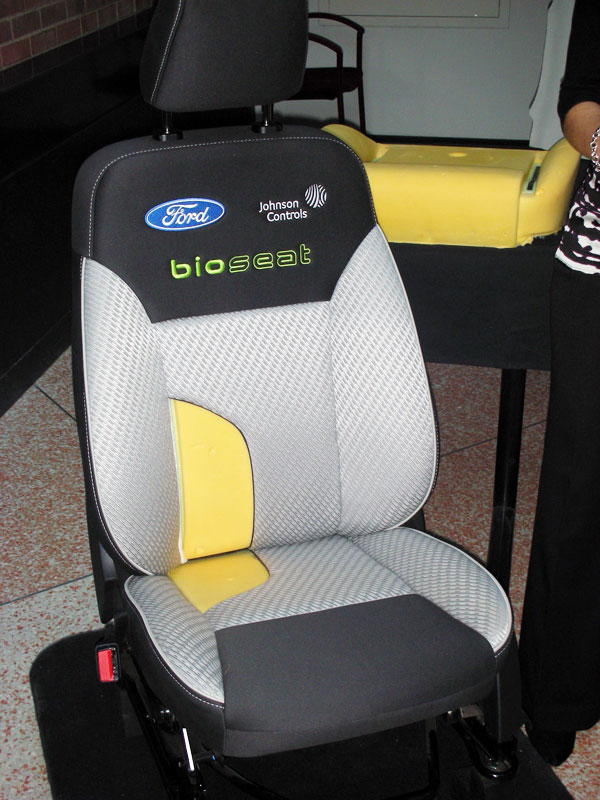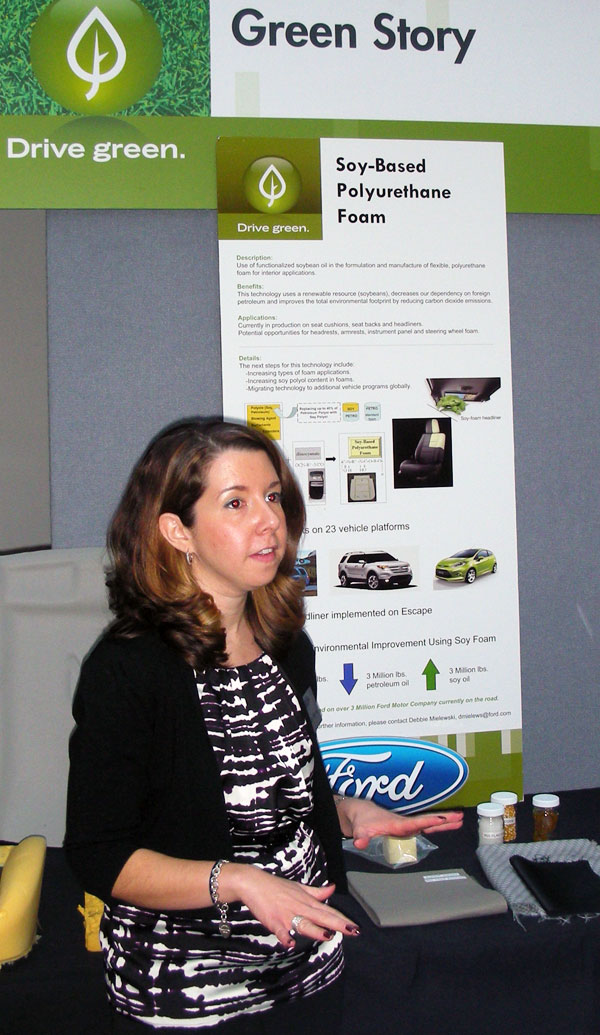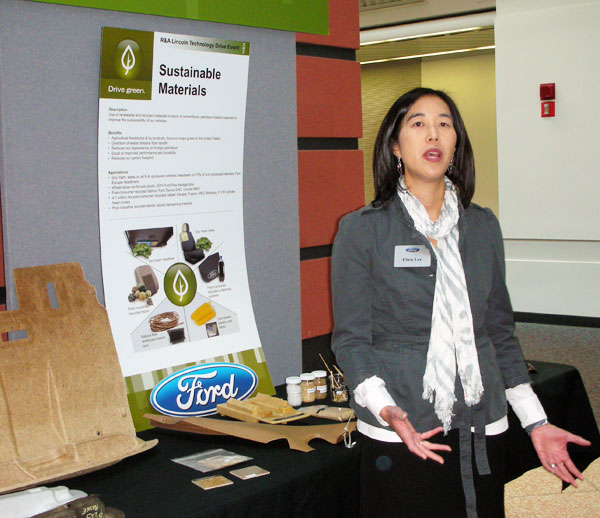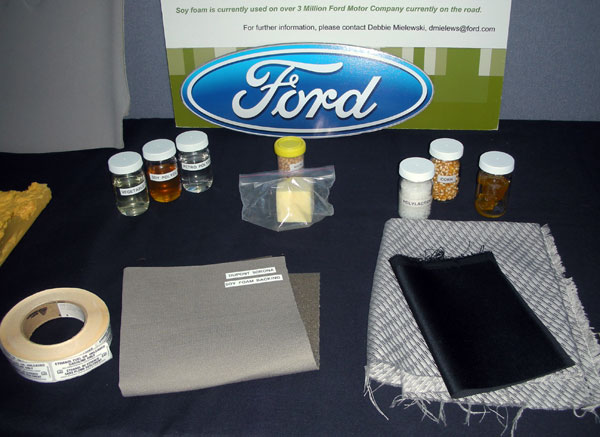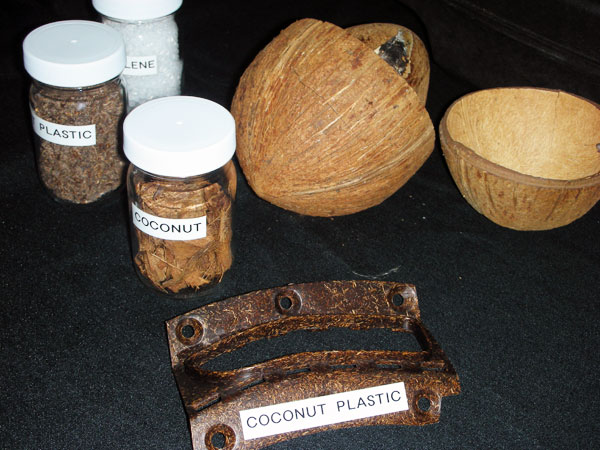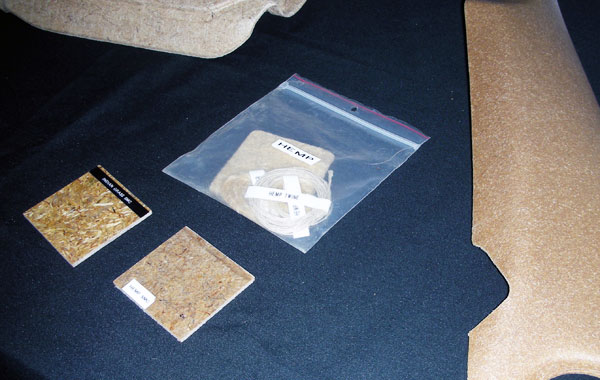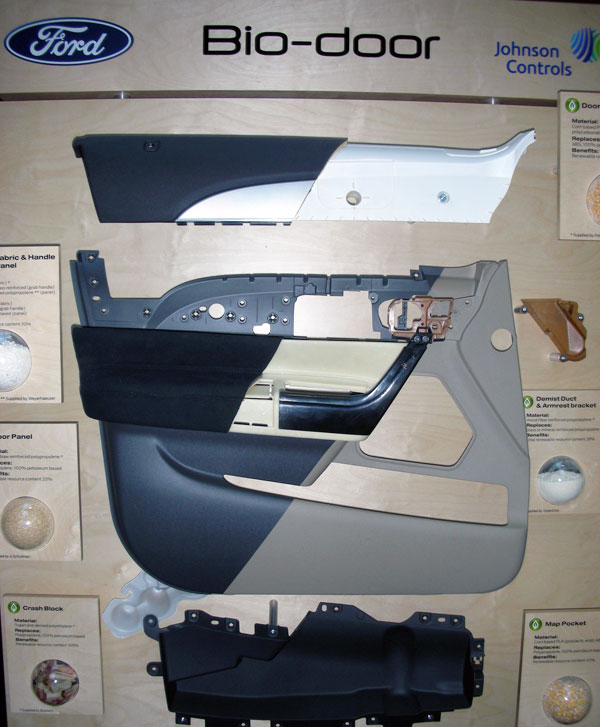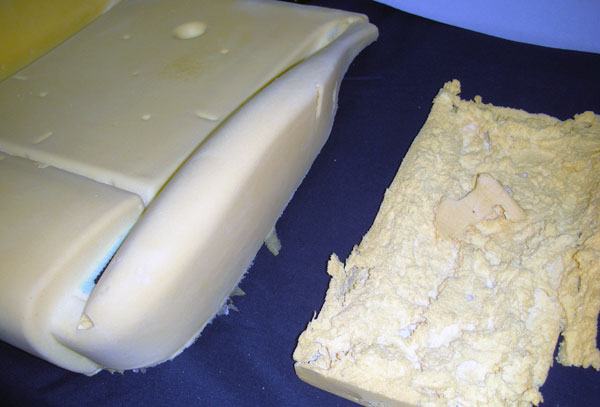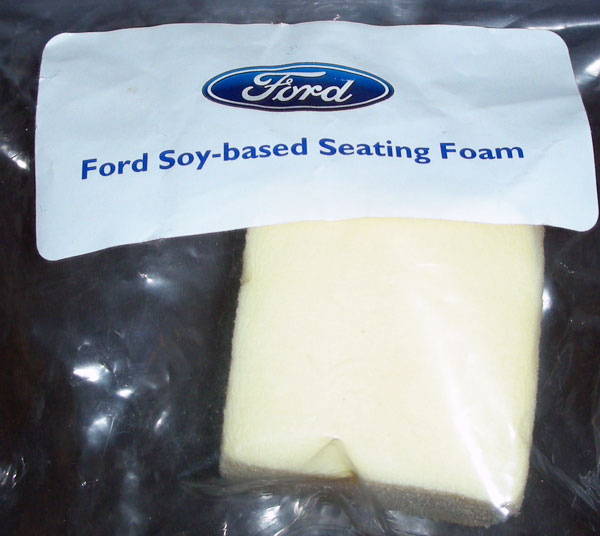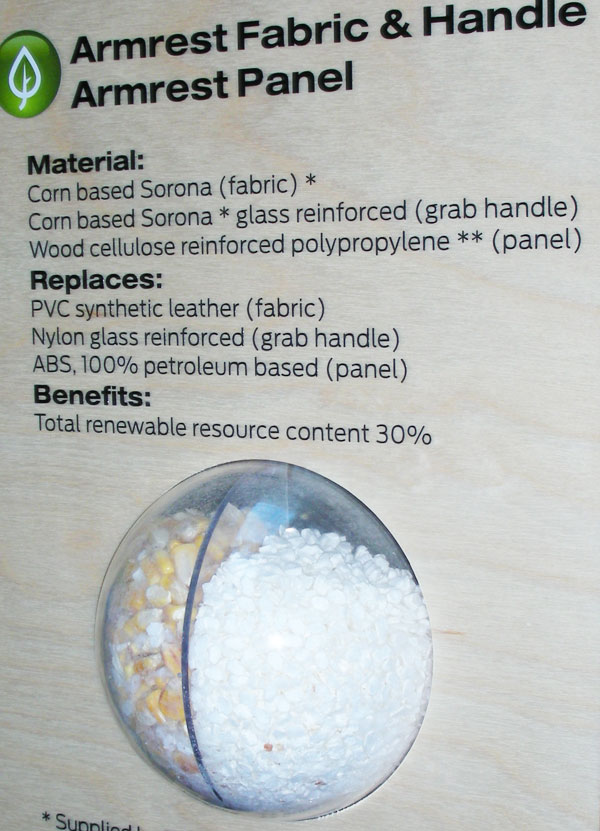The other part of our Ford NAIAS trip, which I told you about here, was a day spent at Ford HQ in Dearborn, MI.
We started out being shown how the new Ford models are conceptualised and then digitally designed. This design process uses 3D and CG technology and leaves no stone unturned when it comes to all aspects of design, from how light reflects on the car outdoors to how it will look on the showroom floor.
What I was most interested in was the eco technology used by The Ford Motor Company.
“Ford is committed to offering customers affordable, environmentally-friendly technologies in vehicles they really want. We are focused on providing solutions that can be used not for hundreds or thousands of cars, but for millions of cars because that is how Ford truly can make a difference.” – Alan Mulally, President and CEO, Ford Motor Company.
While aware of the current economic crisis, which is seeing consumers curb their spending, especially on luxury items such as cars, Ford has seen this as an opportunity to improve their technology when it comes to sustainability.
Although consumers are more cost-conscious during these stressed economic times, many remain committed to more sustainable lifestyles and products, evident by the growing demand for items such as organic foods, clothing, personal-care and cleaning products. In fact, goods and services focused on health, the environment, social justice and sustainable living represent a $209 billion marketplace in the U.S. Ford’s use of more bio-based, recycled and reclaimed materials for vehicle interiors gives the company further leverage with this expanding consumer segment that’s living green.
Along with advancing greener powertrain alternatives such as EcoBoost, hybrid and battery electric vehicle technologies, Ford is taking a more sustainable approach to vehicle interiors. Ford designers and researchers are taking a total green approach to vehicle development and design, stepping beyond just fuel efficiency and what’s under the hood and incorporating more sustainable materials and processes inside the vehicle, too.
Ford’s award-winning soy-based foam seat cushions and backs, for example, will be on more than 1 million Ford, Lincoln and Mercury vehicles by the end of this year, leading to a total reduction in carbon dioxide emissions of more than 5 million pounds. Most recently, Ford announced that the all-new 2010 Ford Taurus SHO, Ford Fusion and Lincoln MKZ will feature sustainable interior materials such as seat fabrics made with varying degrees of post-industrial yarns, suede-like material created from plastic pop bottles, chromium-free leather and engineered ebony wood, all of which reduce waste, energy consumption and CO2 emissions.
To ensure these greener material measures resonate with customers, Ford designers are gaining a deeper understanding of the different levels of green consumerism. Statistics show that one in four adults in the U.S. are living more sustainable lifestyles; interested in companies that are more socially responsible and buying products that are healthier for people and the planet. Designers also are examining what’s the most expressive way to use these materials in vehicle interiors and how do they best represent the vehicle brand. Customers, for example, expect suede to look and feel like suede even if it’s made from plastic bottles. Interior wood accents, a common luxury-car cue, must exhibit rich colors and textures, whether it’s derived from a natural veneer or a more eco-friendly reconstituted wood veneer.
Ford researchers are challenged with developing alternative interior materials that perform without compromise to functionality or durability, can be manufactured in a more eco-friendly manner, decrease our dependence on foreign oil and are cost effective. No interior application is off limits on the research front, with plastics, rubber, foam, film and fabric under the microscope. No material is discarded as a possible substitute, either, from recycled items such as old blue jeans and plastic pop bottles to bio-based sources such as hemp, wheat straw, corn and soybeans.
The goal is to provide the company with as many sustainable material choices as possible for interior components front to back, from seat cushions and fabrics to underbody and impact shields, headliners, trunk liners and more.
In Vehicles Today
Ford’s imaginative use of sustainable materials for vehicle interiors in North America includes:
- Award-winning soy-based polyurethane foams on the seat cushions and seat backs, now in production on the Ford Mustang, Expedition, F-150, Focus, Escape, Escape Hybrid, Mercury Mariner and Lincoln Navigator and Lincoln MKS. Within a year after its 2007 introduction on the Mustang, Ford was using soy foam seats on more than 1 million vehicles, which results in a reduction of petroleum oil usage by 1 million pounds annually. This year, Ford is expanding its soy-foam portfolio to include the industry’s first application of a soy-foam headliner on the 2010 Escape and Mariner.
- 100 percent post-industrial recycled yarns in seat fabrics. The 2008 Ford Escape was the first vehicle in the U.S. to use seating surfaces made from 100 percent post-industrial recycled fabric. The 2010 Fusion and Mercury Milan Hybrids feature 85 percent post-industrial yarns and 15 percent solution died yarns. The use of 100 percent post-industrial yarns represents a 64 percent reduction in energy consumption and a 60 percent reduction in CO2 emissions. 100 percent post-consumer recycled yarns in seat fabrics. The 2010 Ford Taurus SHO and Lincoln MKZ utilize fabrics made from pop bottles to further reduce consumer waste and at the same time maintain the luxurious hand and appearance required for luxury vehicles. Each meter of this micro denier suede is made from 20 recycled plastic pop bottles.
- Underbody systems, such as aerodynamic shields, splash shields, and radiator air deflector shields, made from post-consumer recycled resins such as detergent bottles, tires and battery casings. In 2008, nearly a dozen Ford, Lincoln and Mercury products featured these applications, diverting between 25 and 30 million pounds of plastic from landfills. For the 2009 model year, all North American products will use the recycled resin.
- Engineered ebony wood. Recycled and reassembled grain by grain, this wood is stained with a water-based stain to give it the warm, rich appearance luxury vehicle owners expect without destroying additional trees. The wood is featured on Lincoln products, including the Navigator, MKX and MKS. For 2010, the Lincoln MKZ will also offer interior leathers tanned with a more earth-frie
ndly, chromium-free process.
Ford’s holistic and sky’s-the-limit approach to using more sustainable materials means that researchers are hard at work developing new implementations of other renewable materials to help reduce resource burdens, waste and emissions as well as help reduce the weight of vehicles and improve their fuel economy.
On the Horizon
- Corn-based, compostable and natural-fiber filled plastics. Under development are, for example, natural-fiber composites as a potential substitute for the glass fibers traditionally used in plastic automotive components to make them stronger.
- Polylactic acid (PLA), a biodegradable plastic derived completely from the sugars in corn, sugarbeets, sugarcane, switch grass and other plants. Plastic parts made from PLA can biodegrade after their life cycle in 90 to 120 days versus up to 1,000 years in a landfill for a traditional petroleum-based plastic.
- The replacement of petroleum-based fillers with soy protein fillers in rubber for items such as door seals, floor mats, gaskets and splash shields.
- Experimentation with nanotechnology, including nano-filler materials in metal and plastic composites to reduce weight while increasing strength.
“When we consider incorporating a sustainable material into an interior, we have to be sure that it supports the brand, that it can be manufactured in such a way that conserves energy, natural resources and reduces CO2 emissions, and, most importantly, that it provides the appearance, quality and durability that our customers expect.” – Carol Kordich, Designer / Ford Corporate Design
So you can now rest assured that when you purchase one of these new Ford´s that you are indeed making a sustainable, eco-friendly choice.
This really was a fascinating experience so thanks again to Ford for making it happen.
*Ford Motor Company paid for my travel and accommodations at the 2-day Innovation and Design Fantasy Camp event, I was not compensated in any other manner for my time. My opinions posted here are my own.

